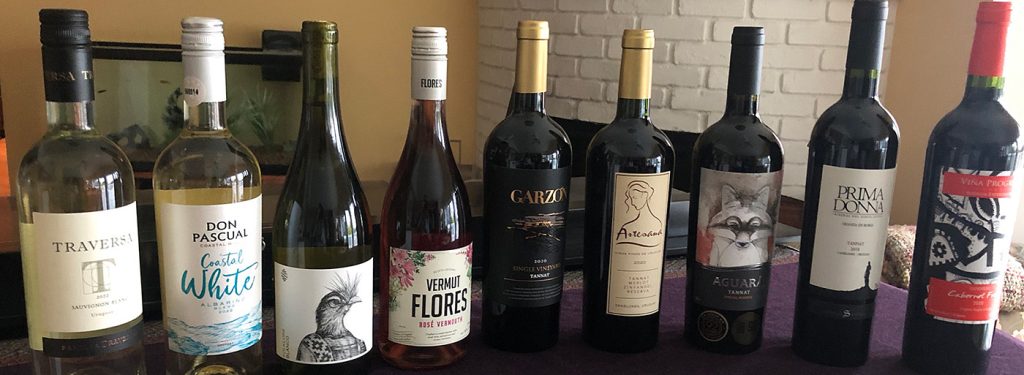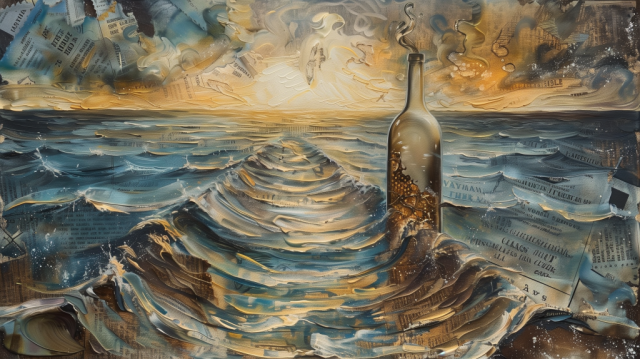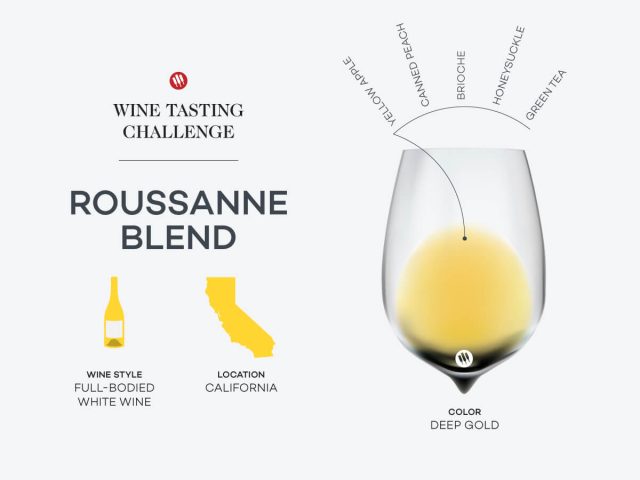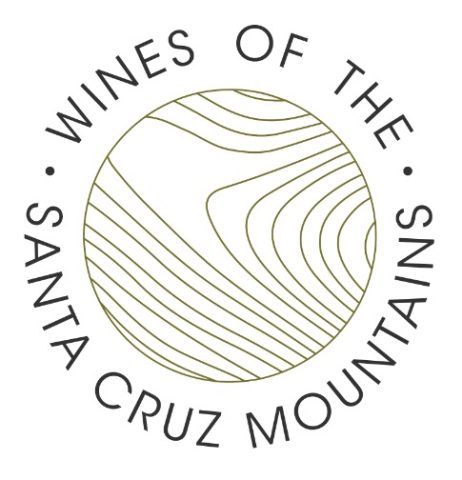Uruguay is a Tiny Wine Region Delivering Softly Big, Delicious Flavors You’ll Enjoy

Uruguay is a tiny wine region delivering big, pleasingly delicious flavors. This pretty much sums it up. Still… the details. Quoting Kate Morgan-Corcoran, “Uruguay’s wine industry consists primarily of small, family-run wineries, many now in their fourth generation.” 02.26.24
Last year, I began a journey with Uruguayan wines, “Welcome to a Study of Uruguay Wine Through a Castel Pujol Sample.“ I’m circling back, because this wine region is quite notable, and only growing since then. My first story has facts and figures. This one is expanding on them, and gives you a sampling of the continued education. I also was fortunate to attended an “Uruguay Wine 101” webinar. Led by Buenos Aires-based Joaquin Hidalgo, Joaquin is a South American editor at Vinous, a weekly wine columnist at Argentina’s leading newspaper. His devotion is extraordinarily deep.
Uruguayan Wines
This tiny region, delivers tremendous stories,and they’re mostly deliciously affordable wines… Uruguay has over 250 years of wine history, so this isn’t a Johnny Come Lately, they’re not new to making wines waves, just new to us knowing about them. For instance, there are nine wine regions in South America, so to come in as the fourth largest speaks volumes to it being a best kept secret, until now. South American wine regions, you ask? Argentina, Bolivia, Brazil, Chile, Columbia, Ecuador, Peru, Uruguay, and Venezuela. To be fourth largest? That made me take a hard look at something I’ve (and maybe you’ve) been missing.
Side note: Imported wines from regions outside of the Untied States are delicious and quite affordable, due to cost of living differentials. Like things coming in from other countries, as long as slave labor isn’t a factor, great, honest, and intriguing bargains exist. When thinking of large-sized gathering, imports come to mind.
Being invited to take part in my first Uruguayan wine sample program with a companion webinar, my eyes were widely opened to this emerging and comprehensive region. In 2023, for instance, approximately 103,000 tons of wine grapes were harvested, from 22,300 acres in Uruguay. A comparative example is California’s tonnage in 2023, of 802,083 tons, from 615,000 acres. As an emerging wine region, this was the fourth largest harvest in South American. And, the best known white wine grape coming from Uruguay is Albariño, with the best known red being Tannat.
From Fine Wine: “Uruguay was on the brink of wine discovery. A collection of winemaking families, supported by growing international investment and interest, has brought this small country from its Basque/Italian immigrant roots into the 21st century. Nestled between Argentina and Brazil, Uruguay is shaped by a mild Atlantic climate more akin to that found in some European wine regions (think Bordeaux) than that of its Latin American neighbors (Argentina and Chile), with their high desert, Pacific, or sub-tropical influences. The vineyards of Maldonado are planted above some of the oldest rock on the planet, the Río de La Plata craton, which is 2.5 billion years old, for instance.”
Uruguayan Wine Samples

Traversa 2022 Sauvignon Blanc, Uruguay
The history of Familia Traversa: [It] is now four generations of nurturing their vineyards in the south of Uruguay. “Our Wines fuse artisanal tradition, with the most modern technology.” Traversa exports to Brazil, Russia, Poland, Belarus, Japan, United States, Mexico, United Kingdom, Netherlands, and Paraguay.” They’re having tremendous success, and justifiable so. It’s a beautifully delicious Sauvignon Blanc, worthy of anyone’s time and explorations. I love my Sauvignon Blancs being well balance… Not too much of the pyrazines, the source of kitty notes. The less ripe the grapes are, the less pervasive the aromatics, so they’re picking more developed fruit. It’s a fine line between early picking, when the Sauvignon Blanc Claw Factor comes into play. The latter, the definition of Sauvignon Blanc begins to dissipate. This winery pays attention to the balance, and I just loved it.
From their site, to their credit: “Wines that fuse artisanal tradition with the most modern technology.”
About the family: “It was 1904 when Carlos Domingo Traversa and his parents arrived in Uruguay. The son of Italian immigrants, he spent his youth as a vineyard worker and in 1937, together with his wife María Josefa Salort, he was able to purchase five hectares (12+ acres) of land in Montevideo, in a region providing optimum conditions for growing vines.”
The wine was refreshingly delicious. Enjoying with chicken or pasta, with a smooth cream sauce, is prefect food pairings. Then, top is off with being a very small country and brand, having this much worldwide distribution is a feat! This wine speaks for itself. If you find it, give it a try. It’s so fresh and exciting.

Familia Traversa worldwide distribution.

Don Pascual Coastal White Wine from Uruguay
Coastal White: Discover Don Pascual, a winery in Juanico, Uruguay and explore their most popular wines. This one is very easy. Bringing a Spanish Albariño to South America was just the right thing to do. Most of Uruguay is humid with a subtropical climate, as it’s located entirely within the temperate zone. This makes it near uniformity nationwide. This adds to consistent winemaking and styles, because there’s not a lot of fluctuating. It’s that elemental to grasp.
I went to another source, just for fun and a comparison. So… Mr. D. of Wine Merchants described this one perfectly, “Don Pascual Coastal White has a delicate pale yellow color with greenish reflections. The mixture of its varieties combines the influence of the Atlantic Ocean and the wide estuary of the Río de la Plata, and gives us a vibrant, saline wine, with citrus freshness, notes of white fruits and aromas of scrub.” I agree, especially since I’m finding that the wines from Uruguay to have some protection from the low, hilly ranges, giving them more predictability.
Don Pascual Winery is part of the CorkAlliance.com group. This is an interesting concept. Quoting their Web info: “At the 34th parallel, in Uruguay, in the small town of Juanicó, Deicas Family founded their winery. Establishment Juanicó is a winery that combines new process technologies, own production protocols developed by an oenological team, and strict quality control. The winery accompanies the challenges that the vineyard faces every day to obtain quality grapes that allow it to produce wines of excellence. The objective is to achieve a perfect combination of terroir, technology, and human capital. Juanicó characterized by its clay-calcareous soils, its undulating soils with good water drainage. Seasons marked with cold winters, warm summers with refreshing winds, and high luminosity; all these conditions are excellent for high-quality wines and tremendous aging potential. Don Pascual is the winery’s line of wines. A line that accompanies consumers in their evolution, with wines capable of generating delighted, inspiring, and incredible experiences.

Castel Pujol from Uruguay
It’s all about the critters for this wine brand: This wine is created from Castel Pujol, imported by Wine for the World. It’s called the Bodega Cerro Chapeu 2021 Castel Pujol Folklore Blanco White. This wine crafted is a blend of 70 percent Trebbiano and 30 percent Malvasia. It’s intriguingly tasty… lemon and what? Tart, something on the finish that lingers and lingers, like a lost memory of something earthy. Trebbiano is new for me, while I had had a Malvasia 2010 vintage. So, even the Makvasia isn’t even a distant memory anymore. Needless to say this is a really tasty, new adventure.
Castel Pujol: imported by Wine for the World. It’s called the Cerro Chapeu 2021 Castel Pujol Folklore Blanco White. This wine crafted is a blend of 70 percent Trebbiano and 30 percent Malvasia. It’s intriguingly tasty… lemon and what? Tart, something on the finish that lingers and lingers, like a lost memory of something earthy. Trebbiano is new for me, Malvasia I had a 2010 vintage, so it’s not even a distant memory anymore, but welcome back 30 percent – tongue in cheek. Needless to say this is a tasty, new adventure. Translated from the Quico Carrau Pujol Website, a few English adaptations for more clarity.
From their Website, background: “We are dedicated to the art of winemaking in a unique biome. Cerro Chapeu was born from the tradition that our family has dedicated to wine for more than ten generations, started in Catalonia by Francisco Carrau Vehils in 1752 and in Uruguay since 1930.

URUGUAY ENTRE VIÑAS EN CERRO CHAPEU
“Pioneers in this unique biome ~ In 1975, Quico Carrau Pujol, in collaboration with the University of California Davis, began the search for a terroir to plant the first virus-free vines. This place had to have qualities that adapted to the climate of Uruguay. That means sandy soils and slopes that allowed good drainage, to avoid excess water on the vine. After visiting and analyzing different soils in southern Brazil and northern Uruguay, they found this property in Rivera, Cerro Chapeu, in Cuchilla de Santana. It has deep reddish, sandy soils, low fertility, and very good drainage. It is here where our project to select vineyards, which would adapt to this place began in Uruguay.”

Vermut Flores Wine from Uruguay
From their Vermut Flores Website: “VERMUT FLORES is a fresh and modern vermouth created using world famous grapes harvested from the Uruguayan countryside. Built on a Tannat wine base, our Red and Rosé vermouth has a complex, fruity, full body. While our Blanc vermouth employs a fresh and vibrant Albariño as its base wine. This aperitif was born in a 4th generation family winery in Canelones – Uruguay, where manual and artisanal processes of wine making are combined with small batch botanicals and natural flower infusions.”
This one is Hot to Trot, with 16 percent alcohol. Don’t get me wrong, it wasn’t unpleasant at all. In fact, it was pretty darned good. The 16 percent alcohol, I’m writing it softly. It’s a big wine explosion. I could help but pair it with one of my favorite Talisman roses… This rose bush starts with a yellow, tinges with red edges. It’s hues quickly become overall orange with red tinges, and are simply. This is exactly how the wine toyed with my palate. It began one way and segued into so much more.
Their Website: “Smell like flowers! Let’s go for a vermouth with olives” Okay, I’m in! From Vermut Flores: “ROSÉ VERMOUTH: VERMUT FLORES ROSÉ is a bright and crisp vermouth from Uruguay. The wine base is a pink Tannat, naturally crafted from the red national grape variety. It’s botanicals are roots, barks, herbs, fruit and of course flowers such as rose, hop, chammomile and elderflower. The Vermouth born in a [fourth] generation family winery where all process are fully artisanal. It is also crafted and infused in small batches.”
Adventurous? It’s got your name all over it, and you won’t know unless you also try.

Garzón Wines ~ Link for YouTube Video. It’s quite dramatic. It’s also very inspiring with a peek at what drives a winery into existence.
Alberto Antonini (Alberto Antonini, consulting winemaker) at Bodega Garzón, is in the first video. I’ve watched several videos produced by and about this winery. The messages are clear. This is a place I’d love to be. Why? I feel a lot closer to it by visually studying it. Let’s see if I can encapsulate what the winery wants you to know, besides its uber fabulous wines…Harvest festivals are joyous, Tannat takes center stage because it’s a powerful and historic grape variety, they enjoy wine shows (bet you do, too!). It’s a fun lifestyle, food and wine? Bring it on!

Delicious Garzon with a perfectly pained dining experience
Bodega Garzón has strains of excellence, sunsets there are fabulous. Maybe you’d like a sailing adventure? They’ll make it happen. Food and wine go hand-in-jand. Having worked in wine, and traveled globally, as well as living on the line of Napa and Sonoma regions and traveling all over California, seeing this style of excellence inspires me. Garzón will delight you with their YouTube videos. I can get hung up in them. They know how to tell their stories in such a provocative way. Not only do they make delicious wines, pairing them with delicious foods (this is their photo above, it’s not a stock photo), but are also brilliant marketers. Watching just a few of their videos will have you hankering to be there. Their sophistication sets them apart from most global wineries.
The above Video of bodegagarzon says it all, it’s a one and a half minute production. Keep in mind, this is what I see when I go on foreign tours. It’s well worth your time, because when I’m touring, THIS is exactly what I want to see firsthand (who wouldn’t?). And it’s what they delivered. Join me! I’m not going to repeat their words. The video above is less than two minutes. Be entertained like I completely was with their wine!
Garzon Tannat, one of the PRIME varieties on Uruguay! Tannat is a red variety, historically grown in Southwest region of France. It’s now one of the most prominent grapes in Uruguay, too, so here we are.

Garzon 2020 Single Vineyard Tannat
- Bodegas Garzon Tannat Single Vineyard, Maldonado, Uruguay Red 2020
- It ranges from $30.00 – $36.00
- A Unique Terroir, with delicious surroundings.
“…Others see destiny as an opportunity… To look beyond, to go beyond… Cheers, to Garzon, the best is always yet to come.”
I loved it. It was actually the first wine I wanted to taste. Something just spoke to me. Tannat – word association -Uruguay? A bit of sophistication, so expectations were high? Gold, black, silver label. All of it, and the flavors delivered. Try Tannat, getting outside of France’s region. Here’s what Wiki had to say about it: France. “Tannat is mainly found near the French Pyrénées (Béarn, Basque country, Gascony). The wine is notable for its very high tannin levels and is often blended with Cabernet Sauvignon, Cabernet franc and Fer to soften the astringency and make it more approachable.” Comparing the two I would imaging is like apples and o

Artesana Vinos Finos de Uruguay Tannat
Artesana Vinos Finos de Uruguay is a blend of Tannat, Merlot, and Zinfandel at 15.4 Percent Alcohol, from Las Brujas, Uruguay. Las Brujas translates to The Witches,and is said it can be an insult, but with John Clarke (1600s), a great grandfather many generations removed from Scotland and in Salem during the trials, I so want to believe he did what he could to not join the fervor, and it was beyond his control. I so DO want to believe.
If you say the wine out loud, it slips off your tongue like poetry in the wind. I was very excited to taste it. Tannat, in our part of my world, now, and can have powerfully big flavor. You’ll get this immediately once you’ve poured from the bottle. My first thought as I at poured it. But, what I’ve been learning from the wine samples I received, is that their flavors from Uruguay are more gentle than the flavors coming from Pacific locations, like California and Chile. It’s not a dig for Pacific Coast wines, it’s just a flavor reality. It’s called terroir, and I believe West Coast soils and winds dictate flavors. This wine ranges from $20.00 – $25.00.
From the winery: Artesana is located on an 80-acre estate located in the Canelones region. This is 30 miles north of Uruguay’s seaside capital, of Montevideo. Canelones is also the premier wine growing region in Uruguay, and home to the majority of the country’s vineyards. Ocean breezes keep the vines well ventilated, and the combination of well-drained soils, with 220 days of intense sunshine annually, produces growing conditions similar to France’s Bordeaux region.
Thinking of a new adventure to parts unknown? You have so many choices. Maybe one day I’ll get to learn more firsthand. For now, I’ve whetted my own appetite.

El Capricho Winery ~ totally playful and delicious, $55.00
This one is a fun winery with animal critters as their totems. So, let’s get definitions in order and figure out what’s what with Caprice: (Capricho) a sudden and unaccountable change of mood or behavior. Similar: whim, whimsy, fancy, fad, humor, quirky, eccentricity, unpredictability, etc. I dug around to get to the bottom of it. It’s all about the whim of it, and honestly, the label says it all. But… serious winemaking makes it an excellent find.
From the winery: “Two great friends, Dirk and Paul, and a shared whim: to create a winery that produces few bottles of the highest quality. This is how Bodega El Capricho was born. With only 23 years, Dirk arrives to Argentina from his native Germany in search of new experiences. He meets Paul, who soon becomes a friend, a mentor and family. Today, over 30 years after that meeting, they fulfill a shared dream in a field of 200 hectares located in the Central region of Uruguay, in Villa del Carmen, Durazno. 7 exclusive hectares of vineyards constitute the beginning of this small family winery.”
El Capricho ~ Vino Fino Tinto Aguará Tannat Special Reserve 2018, 14 Percent Alcohol, from Durazno, Uruguay ~ Capricihion ~ Alcohol now seems to have a new norm of 14 percent. A lot of it might also have to do with the balance of the wine and global warming. Winemakers are having to adjust their know procedures and histories, as we’ve crossed certain boundaries. While this is considered one of Uruguay’s finest Tannat’s, the label is tricky like a fox, or is it a raccoon? With a playful label, this Tannat is a serious wine. It’s really well balanced, with delicious, deep plum color in the glass and a purple rim around the edges of my glass. Earthy aromas are pronounced, with black cherry fruity, and a touch of coffee. The finish brings on the fruit and lingers, like dark chocolate also does. Tannins were young and lingering, and the aging for 18-months in new French oak barrels brings vanilla and caramel..
Soils and Climate from the winery: The predominant soils are Vertisols of texture and medium fertility, with important contents of fine sand that infers a moderate capacity for retaining water and nutrients. The source rock corresponds to sediments from the Cretaceous Era with abundant calcareous rock. The undulation of the land facilitates the natural drainage of water, which is essential for having health conditions organically throughout the vineyard.
The climate is characterized by a high luminosity and above-average temperatures. These conditions allow for an early and complete phenolic maturity which brings softer and rounder tannins, as well as the intense color of our wines. The weather conditions allow for longer cycle varieties, such as Tannat and Cabernet Sauvignon, which adapt very well to our region and reach their full maturity before the beginning of the rainy season, by the end of summer

Vina Progresso Cabernet Franc… slipped right in!
Another fun and fancy wine. Vina Progresso Uruguay Bodega Experimental Overground Cabernet Franc 2020, Progresso Region of Origin, Rio de la Plata, 14 % alcohol. So yummy as I remember it, when I worked with a client who was growing the most Cabernet Franc, in California. My Friday afternoons are long awaited, on a Monday morning, because I’m finally in unsegmented territory. Having a glass of cherry juice with a kick of alcohol launched my weekend.This wine was so pleasurable, and took me through a holiday weekend so smoothly. It’s going to be memorable, just standing on its own. Add it was deliciousness and vibrant, as it evolved; I realized, it was so well balanced for my own pH! Vina Progresso.
Gabriel Pisano’s “Experimental Winery” as he likes to call it, is well educated, because he worked with Super Stars.
“The village of Progreso, 25 km. north of the sea, is in the centre of what is probably the best grape growing area of Uruguay. Old traditions of European heritage meet the powerful Uruguayan personality and exotic New World grapes to produce wines of outstanding quality. VIÑA PROGRESO is Gabriel Pisano’s “Experimental Winery” as he likes to call it. Here he makes his own personal wines in a modern, fruity and young style, reflecting his conception of new generation wines from Uruguay and specifically from Progreso Region.
“Before returning home as the prodigal son, Gabriel made vintages with world famous winemakers. Worked in Clos Apalta (Apalta Valley, Colchagua) in Chile under Michel Rolland. Made wine at David Ramey Wine Cellars (Sonoma), widely acknowledged to be among the wine pioneers who brought California to the forefront of the international wine world. Beyers Truter, of Beyerskloof (Stellenbosch), probably the most famous winemaker from South Africa, would not let Gabriel go back home after a vintage with him.

Uruguayan Wines




